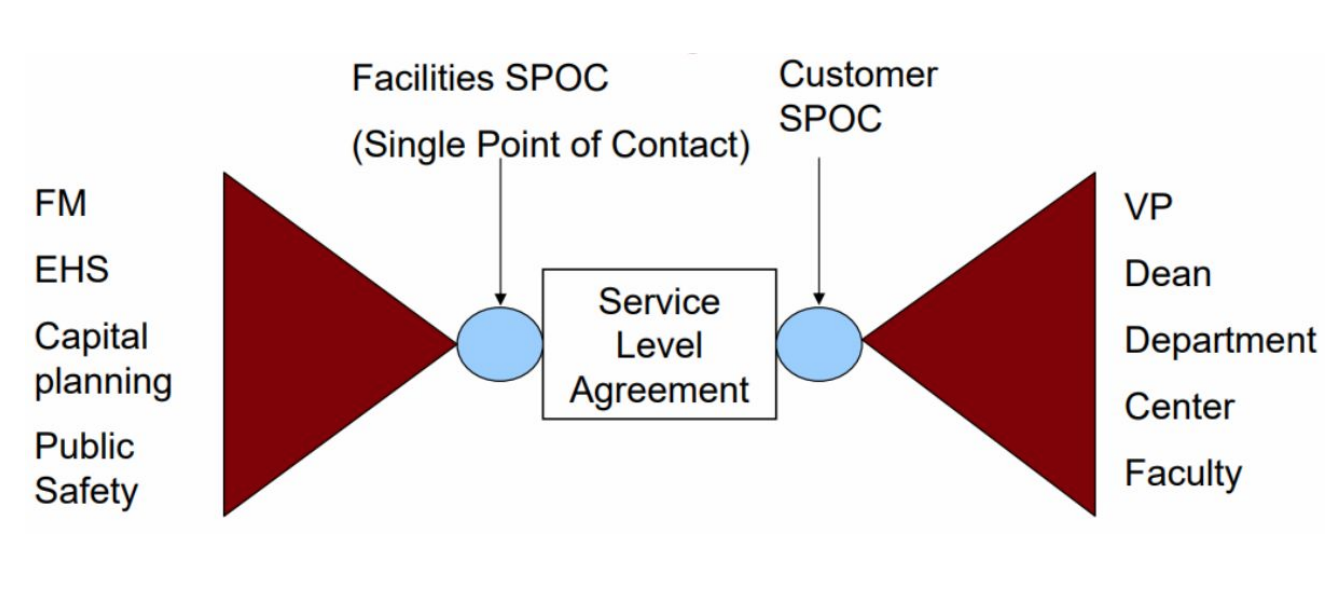If you were to take a straw poll of facilities management leadership at every university across the country, you would probably hear a lot of the same feedback: FM departments are extremely siloed, communication between FM departments and other units on campus is generally poor, and there is a widespread lack of understanding among faculty, staff, and students about what the FM department actually does (they just know to call when something’s broken).
Bill Paulus sought to change that on his campus. As Associate Vice President of Facilities Management at the University of Minnesota (UMN), Paulus has spent years developing and fine-tuning the “Facility Roles Program” (FRP) across UMN’s five campuses.
At the Higher Ed Facilities Forum, Paulus shared how he improved communication and collaboration between the FM department and others by creating facilities lead roles embedded in every single college and department on each of UMN’s five campuses.
Managing Five UMN Campuses at Once
As a sprawling public university offering many complex degree programs, UMN allocates a whopping $4 billion annual budget to ensure everything is well-maintained. With so many facilities (and so many dollars) at stake, keeping chaos at bay poses quite a challenge, particularly since the administration is so decentralized. But those factors also contribute to its success, Paulus explained.
“We’re only one of five university campuses in the country with a college of engineering, med school, law school, veterinary school, and agriculture school, plus all the others on campus, so that kind of creates the complexity that allowed us to create the solution,” said Paulus. “If that’s not you, a different solution may be better for you,” he said.
Paulus shared a slide he made in 2006 when he first started that he still uses today. It demonstrated the connections between the university providers and the customers. When you look at the arrows going in all directions, the difficulty in managing such a complex — and potentially chaotic — program becomes clear.
“Each unit thought differently and wanted to behave differently,” he said.
He described his vision for implementing what he called a “bowtie” because the structure of the graph looked similar to its namesake. The providers (FM, EHS, capital planning, public safety) were one triangle of the bowtie, with the customers (VP, dean, department, center, faculty) on the other side. Each side narrowed down to one point of contact, representing their respective sides. Then the two points of contact met in the middle of the bowtie, with a Service Level Agreement, so everyone was on the same page with the same expectations
Opportunity and History
In 2007, FM formed a “coalition of the willing” and continued refining the process until today. Paulus highlighted some of the program's milestones since its inception, to show that their progress had been a long journey, and managers shouldn’t expect these changes to happen overnight.
For example, when Bridge Group (an informal group formed to streamline facility maintenance) started laying the groundwork for better communication and relationships, it took eight years to launch his formal project in 2015. From there, the Facility Roles Program was added in 2016, and with subsequent tweaking and additional technology, the FM program evolved into the crystal-clear process in place today.
“Our Chief Financial Officer had driven this with the colleges by saying, ‘I want one person to be your financial contact. You give me one person and I will figure out the financial plan for your college.’ We wanted to leverage that for our facility business,” Paulus said.
New Facilities Management Roles
The structure or hierarchy created for FRP included, from bottom to top:
- PBC - Primary Building Contact
- DFR - Department Facility Representative
- RRC-FL - RRC Facility Lead
- RRC - Resource Responsibility Lead
"I can work with 47 people. I can’t manage 20,000 people, but I can manage 47."
“For our main campus of 23 million square feet with 1,000 different departments, I can get to every space on campus with 47 people because we’ve organized by way of this facility lead role,” said Paulus. “I can work with 47 people. I can’t manage 20,000 people, but I can manage 47.”
For example, the College of Liberal Arts assigned an RRC-FL (one per department) to manage each of the departments of that college. Each had a DFR responsible for all the buildings in their department, regardless of location, such as the DFR for the English department. A PBC for Rapson Hall reports any facilities management needs to the DFR, who reports to RRC-FL for the College of Liberal Arts. Each RRC-FL reports to the one RRC to present the needs to FM.

Got that? It sounds complicated on paper, but it works in practice. They also found it useful to further break down the DFR position into four sub-roles for the more complex schools:
- DFR-Primary: A liaison for communications who can also provide building access
- DFR-Alternate: A backup of the primary
- DFR-Card/Key: An additional access provider for more complex programs
- DFR-Space: Manages changes in department space
In total, around 1,000 managers oversee FM needs across the five campuses.
Some departments only require one person to manage all four roles – approximately 50% of these roles overlap, or one person oversees more than one assignment to further reduce the number of people in the hierarchy. Instead of 3,500, around 1,000 managers oversee FM needs. The colleges each determine how to assign their staffing.
The RRC acts as the primary point of contact for FM, public safety, capital planning, construction, space management, health and safety, and emergency management. They appoint DFR and PBC positions and represent the dean and department heads in their duties.
Some working examples of their structure include:
- If a provider needs card access, they make that request to the DFR
- Implementation of emergency plans communication and signage goes to the PBC
- Space change agreements must be approved by the RRC-FL
Managing all this would be too hard to do on paper, so they utilized an ArcGIS web application called “MyU,” providing authentication via a central sign-on for FRP members only. This ensures everything is always up to date and integrates roles, space, finances, contacts, and any forms that need filling out.
Like bacon, technology makes everything better, doesn’t it? Paulus feels this is the magic of the program and the key to making their program transform from chaos to clarity.
Takeaways and Lessons Learned
- It took years to optimize the program
- They had to adapt to needs
- The solution was more complex than anticipated, but so were the rewards
- Now it saves time and effort, so it was worth it
- Support from university leadership was critical
If you would like to learn more about their program, email fm-avp@umn.edu.
Posted by
Join us at HEFF!
An interactive retreat for facilities leaders at the nation's top colleges and universities.
Nov 8-10, 2026 | San Antonio, TX
Learn More









Comments